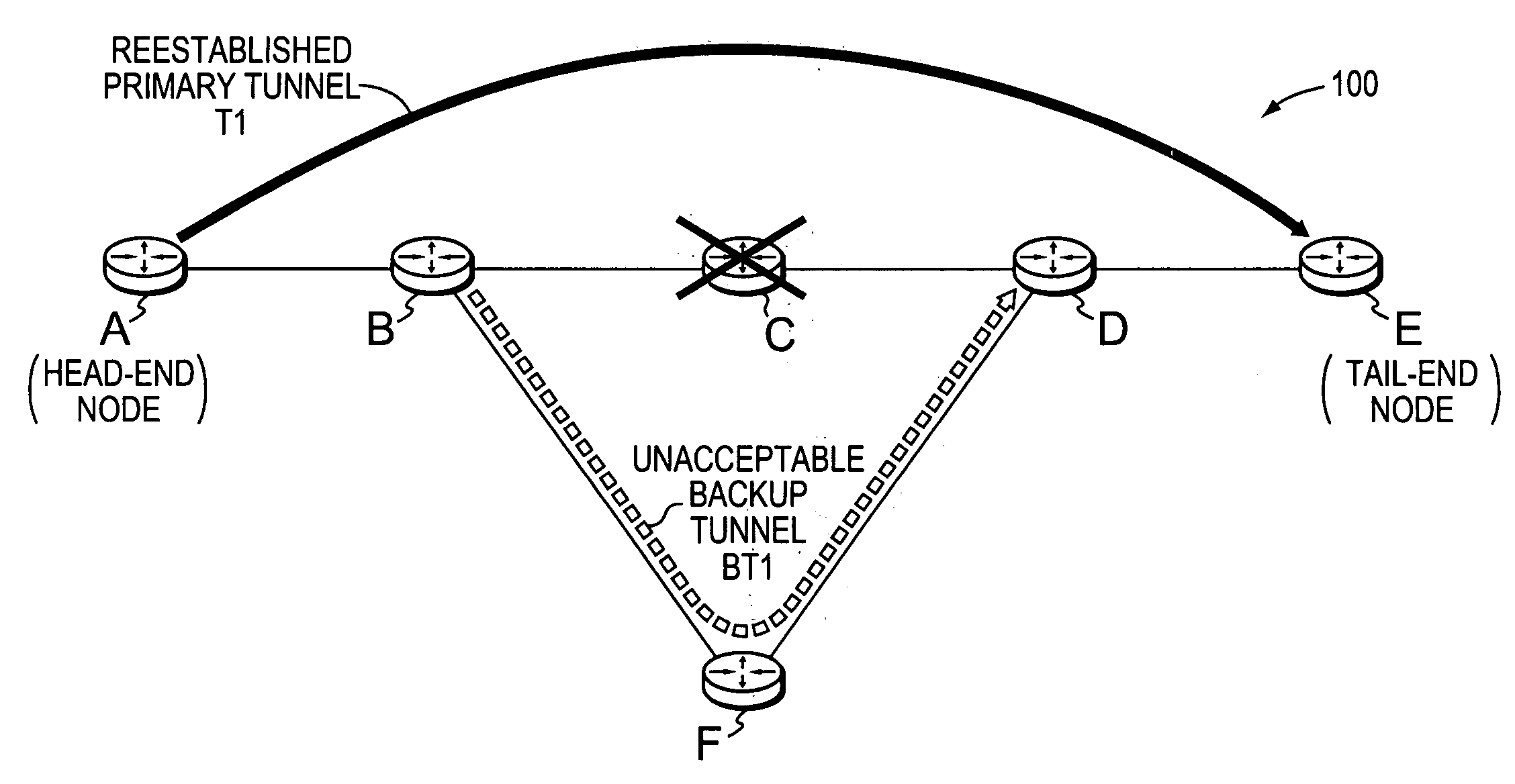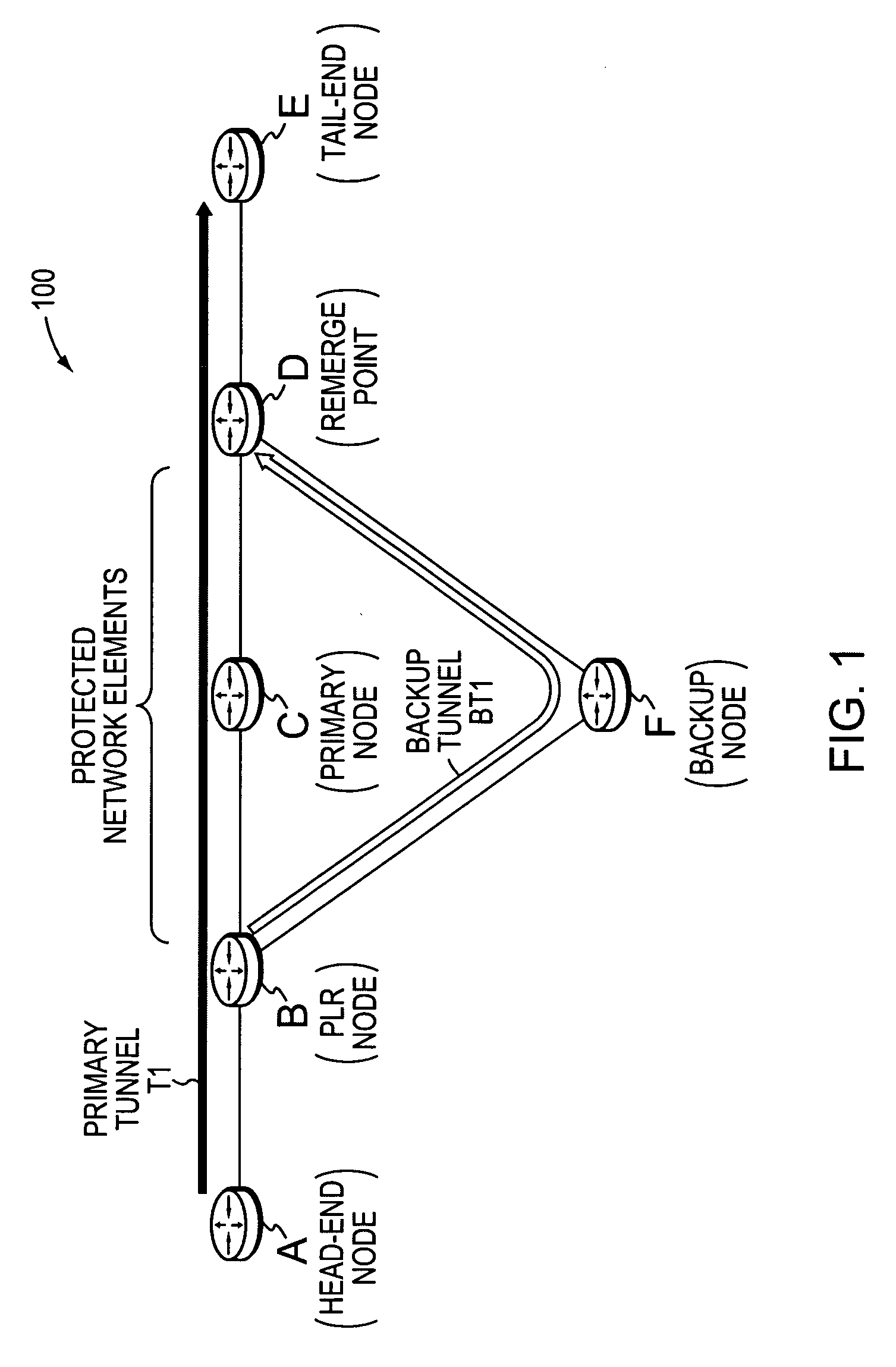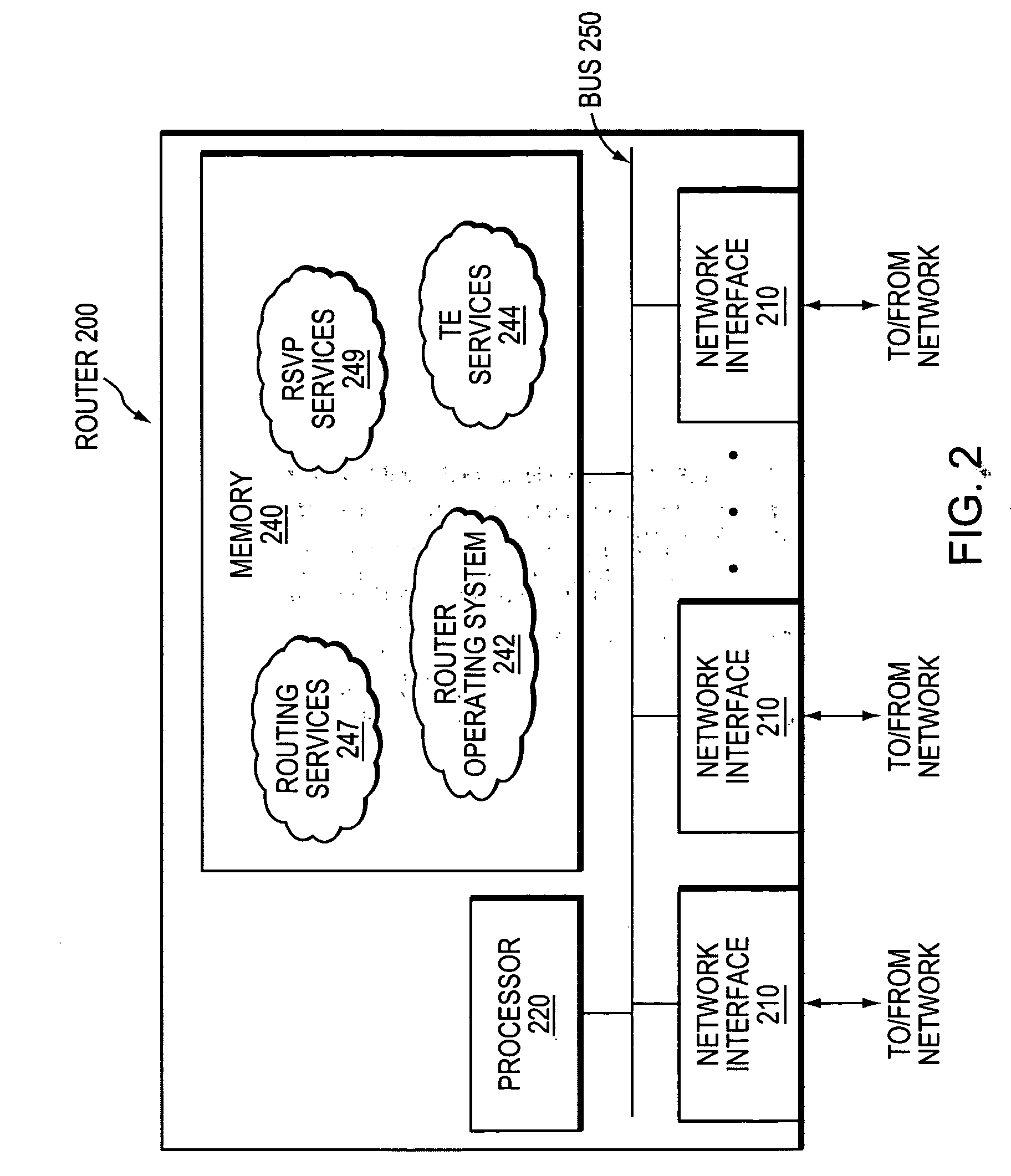Technique for determining whether to reestablish fast rerouted primary tunnels based on backup tunnel path quality feedback
a backup tunnel and primary tunnel technology, applied in the field of computer networks, can solve the problems of rerouting traffic, reducing the efficiency of backup tunnels, and burdensome management of interconnected computer networks
- Summary
- Abstract
- Description
- Claims
- Application Information
AI Technical Summary
Benefits of technology
Problems solved by technology
Method used
Image
Examples
Embodiment Construction
[0034]FIG. 1 is a schematic block diagram of an exemplary computer network 100 comprising a plurality of nodes A-F, such as routers or other network devices, interconnected as shown. The nodes may be a part of one or more autonomous systems, routing domains, or other networks or subnetworks. For instance, routers A and E may be provider edge (PE) devices of a provider network, (e.g., a service provider network) that are interconnected to one or more customer networks through customer edge (CE) devices (not shown, while the remaining nodes B-D and F may be core provider (P) devices, as will be understood by those skilled in the art. Those skilled in the art will also understand that the nodes A-F may be any nodes within any arrangement of computer networks, and that the view shown herein is merely an example. For example, the nodes may be configured as connections to / from one or more virtual private networks (VPNs), as will be understood by those skilled in the art. These examples ar...
PUM
 Login to View More
Login to View More Abstract
Description
Claims
Application Information
 Login to View More
Login to View More - R&D
- Intellectual Property
- Life Sciences
- Materials
- Tech Scout
- Unparalleled Data Quality
- Higher Quality Content
- 60% Fewer Hallucinations
Browse by: Latest US Patents, China's latest patents, Technical Efficacy Thesaurus, Application Domain, Technology Topic, Popular Technical Reports.
© 2025 PatSnap. All rights reserved.Legal|Privacy policy|Modern Slavery Act Transparency Statement|Sitemap|About US| Contact US: help@patsnap.com



